Can Speed Pedelecs Get More People on Electric Bikes?
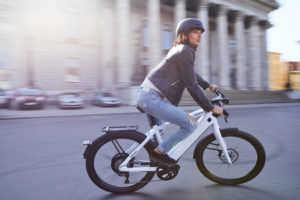 So-called Speed Pedelecs (Class 3) are just like regular e-bike pedelecs in that you turn the pedals to activate the electric assist.
So-called Speed Pedelecs (Class 3) are just like regular e-bike pedelecs in that you turn the pedals to activate the electric assist.
The main difference is that the motor will continue to assist you up to 45kmh / 28mph.
Even in most places where lower speed assisted pedelecs are very popular it’s often the case that speed pedelecs are used in much lower numbers.
Some within the e-bike world have pointed out that speed pedelecs could be one of the keys to unlocking a more sustainable transport future as they obviously allow the rider to cut journey times even more than when using regular pedelecs.
And of course, with quicker e-bike journey times on offer, the car seems less attractive.
This article delves further into the subject of speed pedelecs. Where are they used most? Why and how do people use them? Could and should more be done to encourage them?
Despite all that has been said above, some areas have seen very strong recent growth in their sales, suggesting that they could be made more popular – so what lessons can we learn from where they are proving popular?.
What is the Legal Standing of Speed Pedelecs
In the USA speed pedelecs are incorporated into the three e-bike classification model now being adopted by many states in the form of class three e-bikes.
A Class 3 e-bike can be electrically assisted by pedal action up to 28 mph (in practice some class three models are also made to be class two models as well, featuring a throttle that will assist up to 20mph).
Motor power is limited to 750 watts on class three e-bikes in US states adopting this model.
Bosch is one of the leading e-bike motor system manufacturers that produces systems specifically for speed pedelecs, as shown on the Royal Gazelle example below.
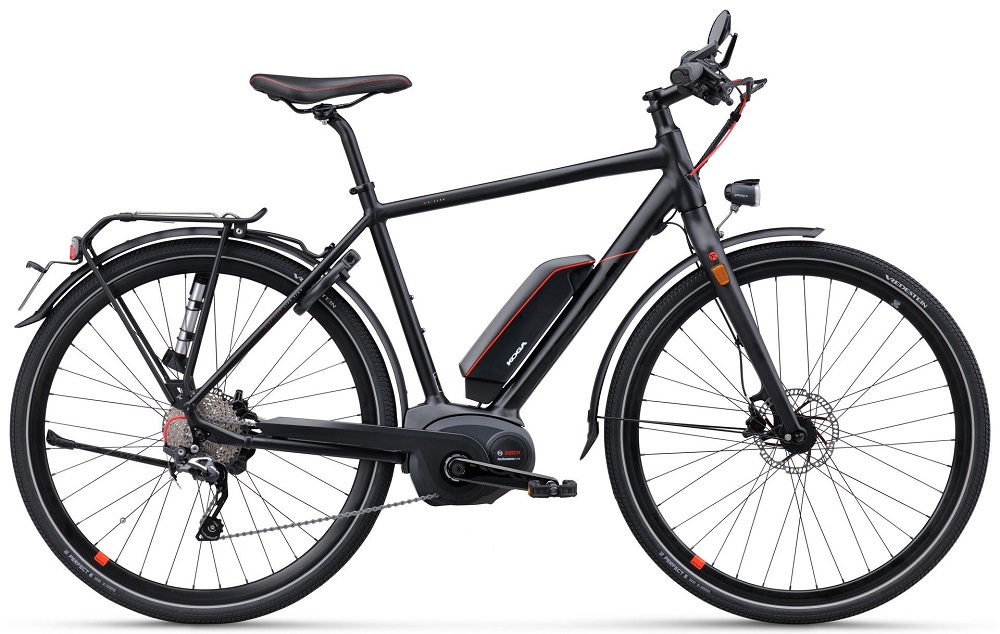
In the massive market that is the European Union speed pedelecs are defined by European Union Regulation 168/2013.
Under this rule they are classed as L1e-B vehicles – in other words mopeds – with a maximum motor assisted speed of 45 km/h / 28mph and a 4 kW rated motor output.
As we will see below however, not all countries in the European Union treat speed pedelecs the same, with interesting results.
Exactly where you can ride a speed pedelec and what paperwork and other legal requirements you might have to comply with depends on where you are.
In the USA Class 3 e-bikes are typically (but not always) allowed on roads and on-road bike lanes (“curb to curb” infrastructure), but restricted from bike trails and multi-use paths.
While a 20-mph maximum speed is achievable on a traditional bicycle, decision makers and agencies often consider the greater top-assisted speed of a Class 3 e-bike too fast for most bike paths and trails that are often shared with other trail users.
In some states not adopting the three class model speed pedelecs are not regarded as e-bikes but mopeds.
There may also be other restrictions relating to speed pedelec riders themselves, depending on the state they are riding in; for example Californian e-bike law states that class three riders must be 16 or older and wear a helmet.
In Europe the situation varies from country to country. Switzerland is the most liberal and allows speed pedelecs in most places that regular pedelecs are allowed.
In the Netherlands and Belgium they are allowed on some bike paths and whilst in Germany there are more physical restrictions on their territory and in the UK they must be registered as mopeds and are restricted to roads along with all other motor traffic.
Where are Speed Pedelecs Most Popular?
Switzerland leads the way for speed pedelec sales in Europe (though Switzerland is not actually a member of the European Union) with speed pedelec sales consistently accounting for more than a fifth of annual e-bike sales and now hovering around the 20,000 mark.
Whilst other EU countries are way behind, speed pedelec sales in the Netherlands have been increasing in recent years; in 2019, the speed pedelec market in the Netherlands expanded by 60 percent compared to 2018 to total over 3,000. They make up around 15% of the moped market (they are legally classed as a kind of moped).
Perhaps the most remarkable take up of speed pedelecs in recent years has been in northern Belgium, which we go into below.
As a general rule though, the more liberal the legal approach of a European country the greater the speed pedelec sales.
In Germany speed pedelec restrictions are greater than the countries already mentioned and speed pedelec sales are only around 0.5% of the e-bike market.
In the UK speed pedelecs are totally banned from all cycle infrastructure and the registration process to get the relevant official paperwork can be tortuous and time consuming and obligatory insurance and extremely hard to find on offer. Hence UK speed pedelec sales are negligible.
Could Speed Pedelecs Get More People out of Cars and Onto E-bikes?
Evidence from Flanders in Belgium would suggest so. This northern area of the country has seen the most remarkable acceleration in speed pedelec registrations in recent years; in 2017, more than 4,500 speed-pedelecs were registered in Flanders, in 2018 that was over 8,500 and last year the 12,000 milestone was achieved (in 2019 only half as many electric cars were registered).
A recent study reported on 100 participants from ten Flemish companies who replaced their commuting vehicle with a speed pedelec for up to three weeks. The idea was to look at motivators and barriers towards speed pedelecs.
Volunteer response was perhaps the first indicator of their huge potential; 15 speed-pedelecs were deployed at ten companies and organizations, from small to large, public and private.
An impressive 520 candidates applied, 106 test riders were selected and invited to commute with the speed-pedelec for three consecutive weeks.
Results were obtained by before and after questioning, with interesting results.
Perhaps not surprisingly the main motivation for testing before the trial was speed – in other words being able to get to and from work more quickly and to save time and money in the process.
However, the test riders assumed they would be able to ride at a constant speed of 45 km/h / 28mph with a speed-pedelec – none of the test vehicles met that expectation.
Speed pedelecs with a 350W rated motor offered a cruise speed of 30 to 35 km/h / 18.5mph to 22mph, whilst those with a 500W rated motor could cruise at 35 to 40 km/h / 22mph to 25mph.
So although the test riders didn’t generally save quite as much time as they thought they would, post test questioning still found many positives; travel was quick and predictable and a positive effect on their mental health was also cited by many.
There were negatives reflected in the survey results – mainly cost of ownership and also some concerns about safety at the higher speeds speed pedelecs can achieve.
Cost is being addressed by the rise of subsidies and leasing schemes in countries like Netherlands and Belgium.
For example, a new Dutch government-backed scheme introduced in January allows employees to lease a speed pedelec for less than the cost of a Netflix subscription.
A €3,000 (about $3,260) e-bike, for example, could be leased through an employer for about US$7.60 per month.
Regs and Results
Sales where speed pedelec regulations are more liberal like Switerland and Flanders appear to lead to rising sales of speed pedelecs.
The Flanders study also show that before and after testing most of the testers found real benefits of the speed pedelecs as against the car. To quote the study:
‘The speed pedelec was still considered as more environmentally friendly than a car, the higher achievable speed limit was still an inherent driver to use a speed pedelec, and with it there was the possibility to cover more ground more quickly and with less influence from wind or terrain.’
And the report’s main finding was pretty conclusive:
‘The speed pedelec has the potential to be a sustainable alternative for cars with internal combustion engines for commuting purposes. For the Belgian case, commuting with a speed pedelec can solve problems regarding congestion and air pollution.’
However cost, reliability and some confusion over exactly where and at what speed so-called speed pedelecs are allowed were highlighted as barriers in the study.
Studies and Trials Point the Way
The Flanders study gave some very helpful pointers on just how more speed pedelec use might be promoted:
‘In terms of policy implications, participants indicated that incentives such as the improvement of the knowledge of the traffic regulations by the general public, the set-up of leasing programs, cycle reimbursement for speed pedelec commute, and increased investments in appropriate infrastructure would help to overcome the perceived barriers.’
In fact the Flanders government has already started to address some of these concerns. Annick Roetynck of LEVA-EU (LEVA = Light Electric Vehicle Association) gives this summary of their pro speed pedelec measures:
‘….. the European Union has categorized the speed-pedelec as a moped. And so, all Member States have slavishly copied that category in their traffic codes; all Member States except Belgium. Thanks to some visionary civil servants, the speed-pedelec in the Belgian traffic code is not…a moped “full stop”, instead a separate category has been created: Moped Class P – Speed Pedelec. This made it possible to develop adapted traffic rules with new traffic signs which, by using the letter P, allow or exclude speed-pedelecs.
Moreover, this separate categorization made it possible to subject the speed-pedelec to the same financial incentives as traditional (e)-bikes.
In Belgium, you can enjoy a tax-free allowance of up to € 0.24 if you commute by bicycle, electric bicycle or speed-pedelec.
The test riders of 365SNEL (the study quoted above) covered an average of 21.6 km a day. This can result in more than €1,300 extra this year, tax-free.
Sales are further boosted by advantageous leasing formulas through employers.
Road safety was an important obstacle before testing. But that concern faded quickly. The test riders felt at ease because of the choice between road and cycle path, which the Belgian traffic code offers.
The general rule is that if the speed limit on the road is 50 km/h, the speed-pedelec rider can choose between road or cycle path. If on the road the speed limit is higher than 50 km/h, they are obliged to use the cycle path.’
There have also been moves in the Netherlands to clarify where speed pedelecs (classed as mopeds) can go. There are two kinds of low-powered mopeds in the Netherlands, Bromfiets (45kmh / 28mph motor power limit) and the wonderfully named Snorfiets (25kmh / 15.5mph power limit).
Speed pedelecs are classed as Bromfiets and as such must follow the road signs for them, which sometimes allow them to be used in wider, faster cycle lanes and sometimes they are restricted to mixing with motor traffic.
Snorfiets are subject to the same rules are bicycles and 25kmh pedelecs and can usually use cycle lanes. All Bromfiets (including speed pedelecs) must carry a yellow licence plate and Snorfiets a blue one.
European regulations also stipulate a wing mirror as shown on the following Kelver speed pedelec – apart from the mirror and the number plate (and perhaps their greater speed) it can be hard to spot differences between regular pedelecs and speed pedelecs.
There are also concerns about the costs and testing standards that European regulations impose on speed pedelecs; these make them more difficult to manufacture than they need to be and more expensive for the buyer than really necessary.
Safety is also a concern for other users of cycle infrastructure not riding speed pedelecs of course and it would be a huge pity if a backlash amongst riders of slower machines held back more widespread use of speed pedelecs. Perhaps modern technology could come to the rescue in the form of GPS, as an intriguing trial from the Netherlands shows.
This fascinating article in The Verge shows how ‘Schiphol Airport, located just outside of Amsterdam, is preparing to test a new system that automatically slows the fastest electric bikes as they approach….The assurance of slower speeds could eventually allow s-pedelecs fitted with Intelligent Speed Assistants (ISAs) to join other bicyclists on the dedicated bike lanes found everywhere in the Netherlands.’
In other words, rather than going through expensive and lengthy modifications to existing bike infrastructure, use of technology and the right regulation could allow speed pedelecs to be used just as regular pedelecs, simply being speed limited in areas where their extra speed was deemed unsafe.
There are very understandable safety concerns around e-bikes in general and speed pedelecs in particular (especially in relation to older riders). Surely with the correct use of technology, infrastructure design and construction regulations these could be addressed.
Indeed the Netherlands are constructing / upgrading a number of wider, intercity bike paths specifically to allow speed pedelecs on them.
The Brabant area is particularly keen on building a series of high speed ‘F’ routes suitable for speed pedelecs.
Some are already built but the image below shows an artist’s impression of one of the most ambitious future F routes, passing over a canal and linking s’Hertogenbosch and Waalwijk.
And of course it’s important to keep the problem of pedelec safety in proportion, with motor vehicles representling the overwhelming transport danger to motrorists, pedestrians and cyclists alike.
As The Verge points out, in the case of the US at least (and in many European countries), it’s pedestrians and cyclists who are the ones who need more protection for motor vehicles – by comparison those injured by all kinds of cyclists, electric and otherwise, remains tiny.
Stay tuned for more e-bike news and reviews and thanks for reading!
-Rich
P.S. Don’t forget to join the Electric Bike Report community for updates from the electric bike world, plus ebike riding and maintenance tips!
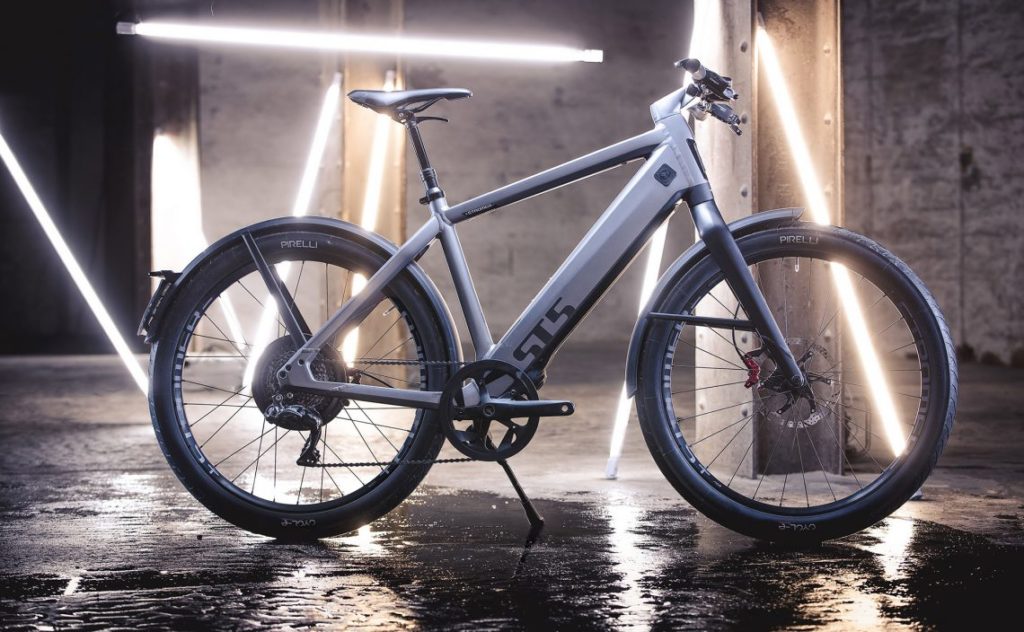
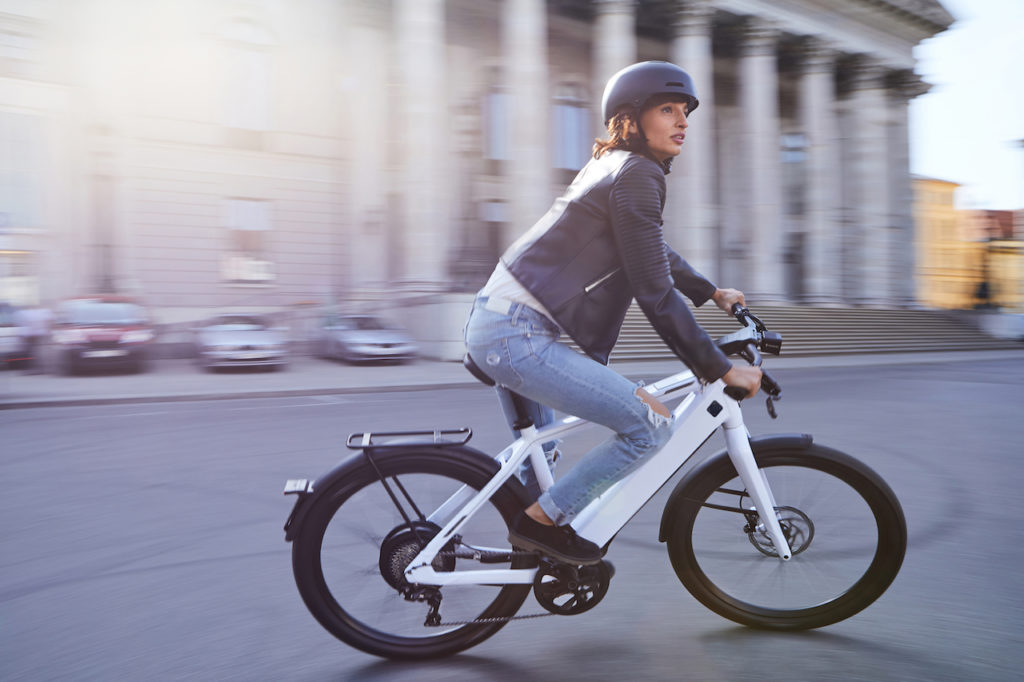
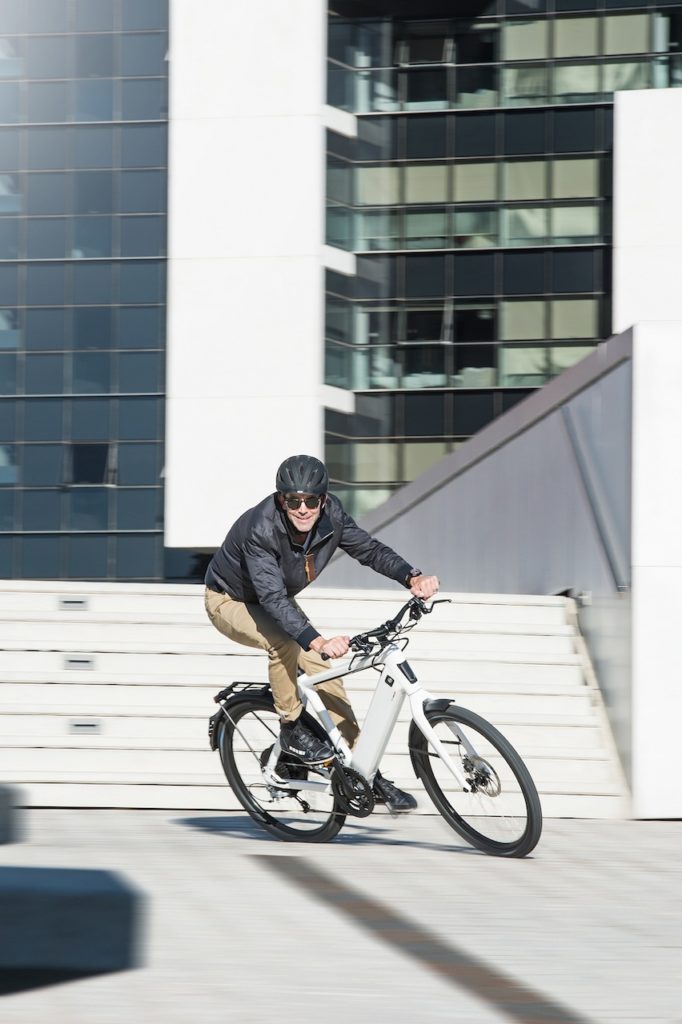
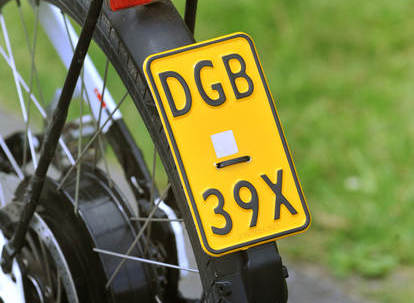
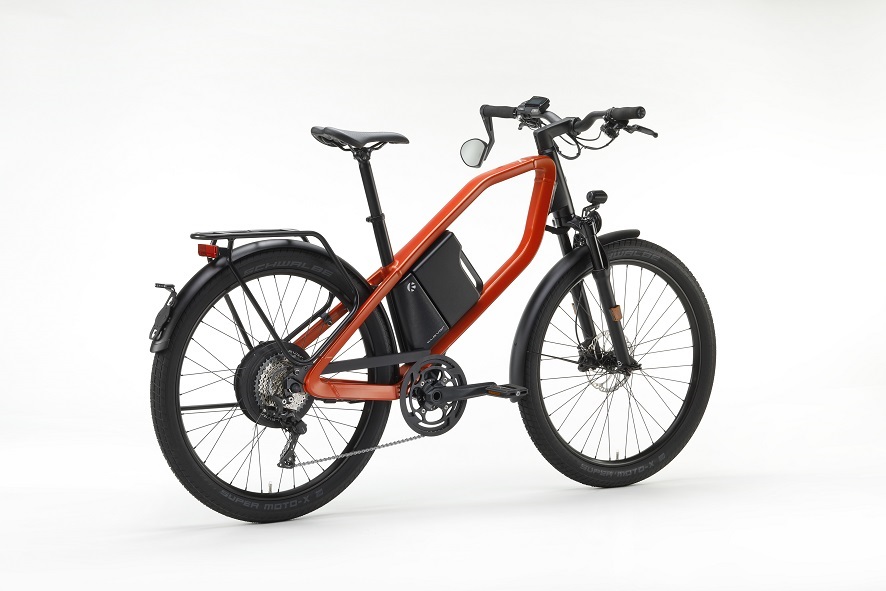
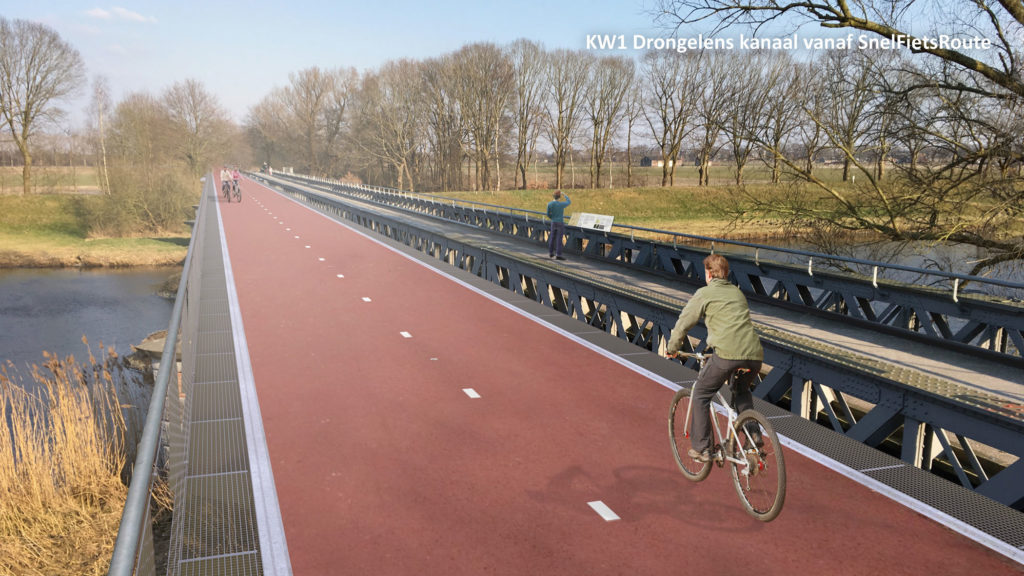



While the extra speed can be nice if your trying to keep up with traffic, that extra speed also costs you dearly in battery charge.
I personally think most people that use a e-bike for actual transportation and not just recreation would not be real happy with those bikes until they learn to take it easy with them. Those bikes can easily go through a full battery charge in 15 minutes -30 minutes. I know I have one of those motors that run on 48 volts and will push my recumbent trike to almost 32 mph for about 5 minutes and then I have a mostly dead battery. I run a 48 volt 18 amp hour battery. Until they come up with some much better batteries, sticking with the 20 mph max versions of the e-bikes generally get you more range.
I have purchased two Bosch Class 3 Pedelec ebikes, not for their potential speed, but for their design, lower weight, and battery range. Most of the riders of Class 3 I’ve seen are senior citizens like me. I’ve ridden on bike trails in Arizona, at about 15mph when a pack of riders on light weight racing bikes pass at 25-30mph. This kind of riding needs to be on roads! For me or most other seniors to ride a Class 3 above 20mph takes a lot of effort, especially for someone over 75.
Been using my modified Specialized Hybrid bike, with a 48V 13ah battery for two years now. Most of the roads, highways, I ride have a bike lane and I hit 50km/h in the summer, 40km/h in the winter. I try and stay off of the busy pedestrian/bike lanes because my speed is way above average. I use the pedal assist almost always and bring my charger to get a full boost at my destination, for the ride home. Sold my car a year ago, as I was hardly using it and am very happy, but the Auto traffic here in Canada are still seldom courteous to ebike riders.
I am 69 years old and have a Trek with the new Bosch Class 3 Speed Pedelec. I am a strictly recreational rider and don’t see it ever replacing my car. Maybe it could for short trips in good weather. I find that for a 1 hour ride my average speed is about 17-18 mph although I love the option of cruising at 23 mph. I find that I am disappointed with the gearing on my bike since I have to pedal uncomfortably fast to go more than 23 mph. The motor seems powerful enough to easily do it. The bike came with the Bosch 625 watt battery and for a one hour ride averaging 18 mph with an elevation gain of 1000 feet and using turbo mode a lot the battery goes through about 1/3 of its charge.
I’m 45 and I have health issues that takes heavy exercise off the table for me. It’s been a year since I’ve started riding a Juiced CrossCurrent to work everyday. The bike is now almost at 6000miles. My 15mile commute takes 40-45 mins through Sausalito, over Golden Gate bridge to downtown San Francisco. I wouldn’t prefer to drive since parking and tolls make it very expensive. And believe it or not bus ride is rarely down to 50mins when there is no traffic and 75-80mins on a normal work day. Plus round trip is $10.25. So, my bike has already paid for itself. Even on rainy days I prefer the bike unless it is very heavy rain and/or I have an early morning meeting. I wouldn’t prefer a slower bike since both ride time and workout is important for me. High assist helps me get to work fast and avoid the sweaty mess you normally would end up with on a regular bike but 40mins low assist, pedaling hard on the way back home is great exercise. It is also meditative and satisfying to ride with views of the bay and Marin Headlands. It never feels like commute. I wouldn’t be able to do these if it weren’t for speed pedelec class.